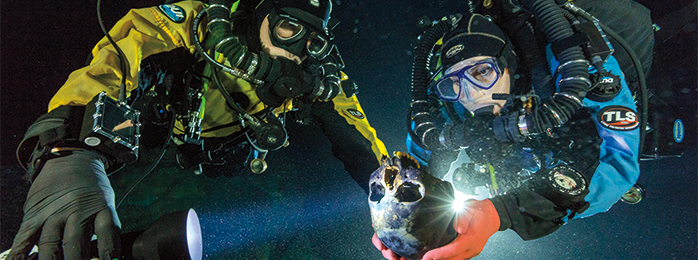
Revealing Our Past
Some 12,000 years ago, a young woman we now call “Naia” wandered into a cave on the Yucatán Peninsula in Mexico, likely in search of water. Suddenly, she slipped and tumbled deep into a massive chamber. There, her body remained undisturbed for millennia, even as water flooded the cavern.
After Naia’s skeleton was discovered by divers in 2007, a National Geographic-supported research team was assembled to study the site. The team included Northwestern earth scientist and diver Patricia Beddows, whose expertise in geology and hydrology proved essential to dating the remains. Naia is now the oldest and most complete human skeleton ever reported in North America.
Beddows returns frequently to Central America to conduct research. She is often accompanied by students eager to learn how the interaction between air, rocks and water yields clues to Earth’s past and future. “I want to instill a sense of adventure in them and make them active participants in scientific discovery,” she says.
Back to top